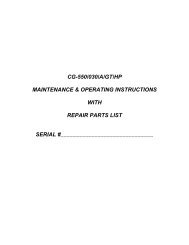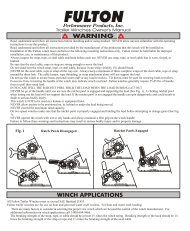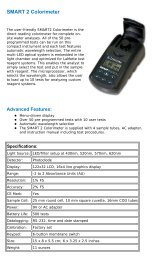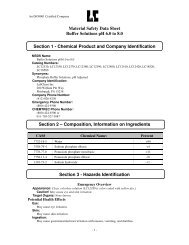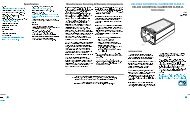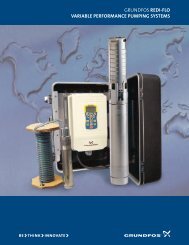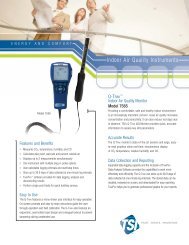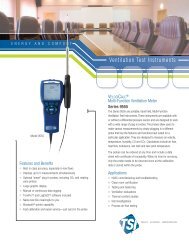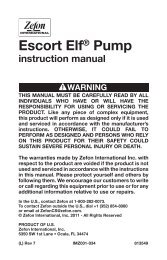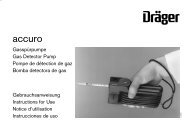LR-24 Electrofisher - Field Environmental Instruments
LR-24 Electrofisher - Field Environmental Instruments
LR-24 Electrofisher - Field Environmental Instruments
You also want an ePaper? Increase the reach of your titles
YUMPU automatically turns print PDFs into web optimized ePapers that Google loves.
SET UP & OPERATION<br />
USER'S MANUAL<br />
Set up and Operation (Cont.)<br />
5. Press the Volts key and use the arrow keys to scroll to the desired<br />
voltage and then press the Enter key (see Figure 6.28).<br />
6. Press the Power Limit key and use the arrow keys to scroll to the<br />
desired power limit and then press Enter (see Figure 6.29).<br />
7. Repeatedly press the up arrow key until the Secondary Waveform<br />
parameters are displayed. Repeat steps 2 through 6 for<br />
the Secondary Waveform.<br />
Fig. 6.28<br />
8. Begin electrofishing.<br />
9. Duty cycle and frequency can have a huge impact on taxis. In<br />
general, lower frequencies are safer for larger fish than higher<br />
frequencies. If you are not getting any response from fish at<br />
all, change the <strong>LR</strong>-<strong>24</strong> settings as follows:<br />
a. Increase the voltage 50 volts press the Enter key and try<br />
again. Stop increasing voltage when you begin getting a<br />
forced response (twitch), from the fish when pressing the<br />
anode pole switch.<br />
Fig. 6.29<br />
b. If fish are not showing taxis then increase the duty cycle by<br />
10% press the Enter key and try again. If necessary, repeat<br />
this step until you elicit taxis in the fish. If increasing the<br />
duty cycle to maximum still does not achieve taxis, reduce<br />
the duty cycle back to 12% and go to the next step.<br />
c. Increase the frequency by 10 Hz, press the Enter key<br />
and try again. If necessary, go back to step “a” before<br />
increasing frequency again.<br />
10. Observe the caught fish closely. In general if it takes more than<br />
5 seconds for a fish to recover, it may have been shocked too<br />
severely. If it takes more than 15 seconds for a fish to recover,<br />
it was definitely shocked too much. Reduce the power limit,<br />
duty cycle, frequency, or output voltage of the <strong>LR</strong>-<strong>24</strong>.<br />
www.smith-root.com<br />
35





